|
The Story of Oregon's Bear Creek
Text and photos by Wayne Elmore
Website design by Victor M. Ponce
|
|
|
As seen in Range Magazine, Spring 1988.
|
|
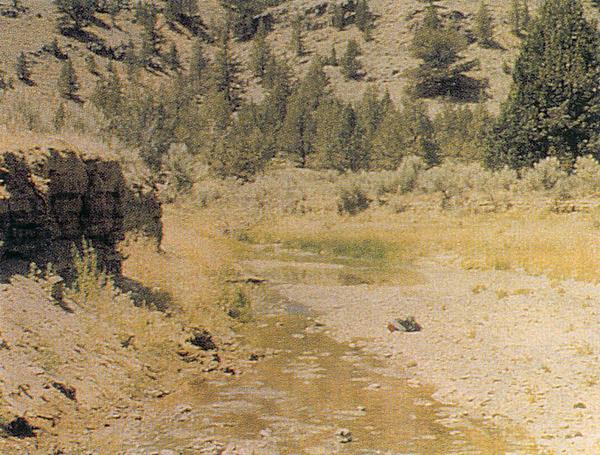 | |
August 1977
|
|
1.
Streamside vegetation was low in diversity, stream banks were
actively eroding, the channel was deeply incised and high flows contained moderate to high sediment loads. Streamflow in the summer was often
intermitent and low in quality.
|
|
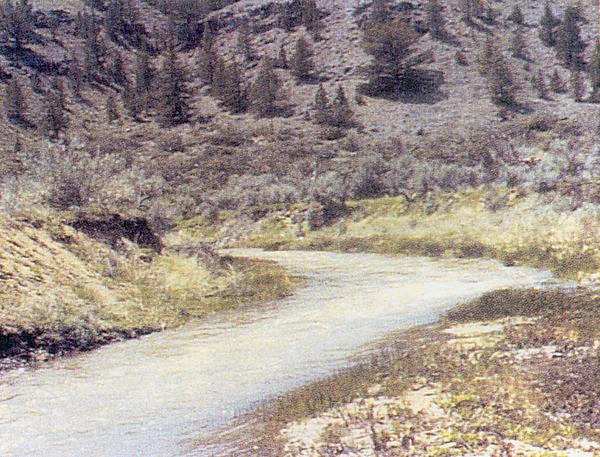 | |
May 1983
|
|
2.
Banks are healing and channel is narrowing.
Sediment, trapped by vegetation, can be seen on the banks in the newly emerging plants. Junipers in foreground, seen in previous photo,
were cut to release upland vegetation and see if this practice would affect willow establishment.
|
|
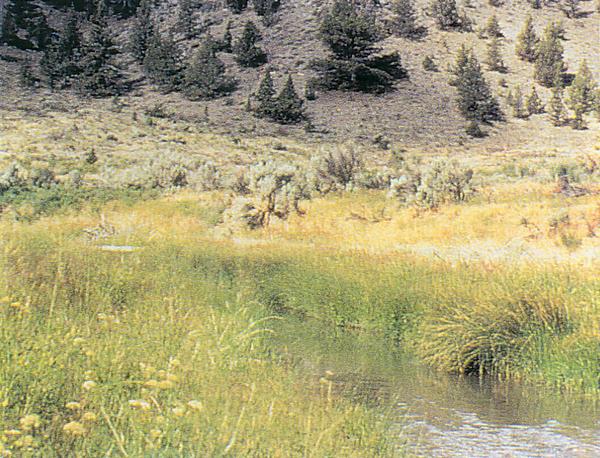 | |
August 1986
|
|
3.
Channel has narrowed considerably and nearly one-and-a-half feet
of sediment
has been trapped on the flood plain. Existing vegetation will carry over to filter sediment and reduce stream energies for
bank protection the next year.
|
|
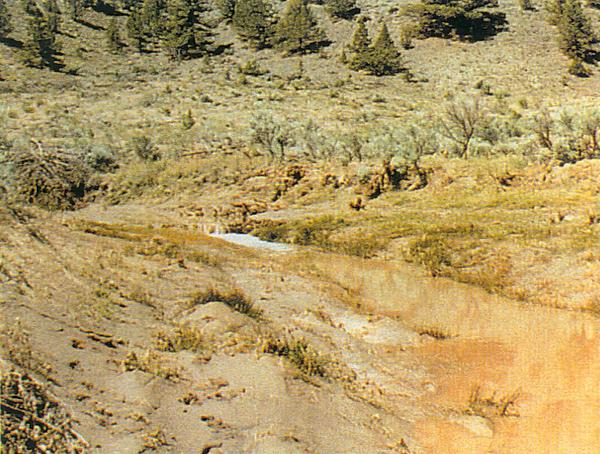 | |
June 1987
|
|
4.
Vegetation along the banks filtered sediment from a summer flood event.
The raising of the flood plain also caused the channel to widen.
|
|
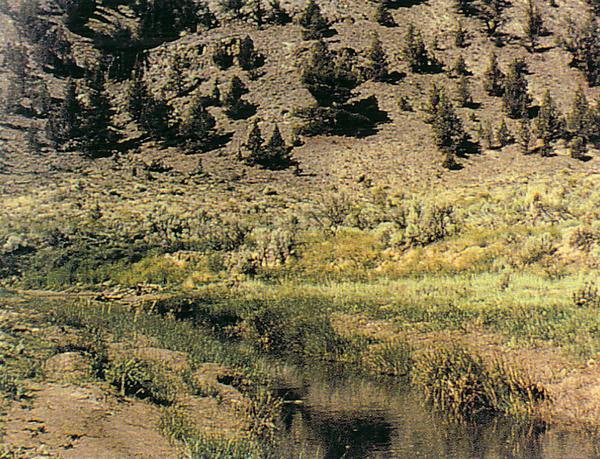 | |
August 1987
|
|
5.
Two months after the previous photo, vegetation is seen growing up through the newly deposited sediment, stabilizing it on the flood plain.
|
|
|
The Story of Oregon's Bear Creek
Text and photos by Wayne Elmore
Website design by Victor M. Ponce
|
|
|
As seen in Range Magazine, Spring 1988.
|
|